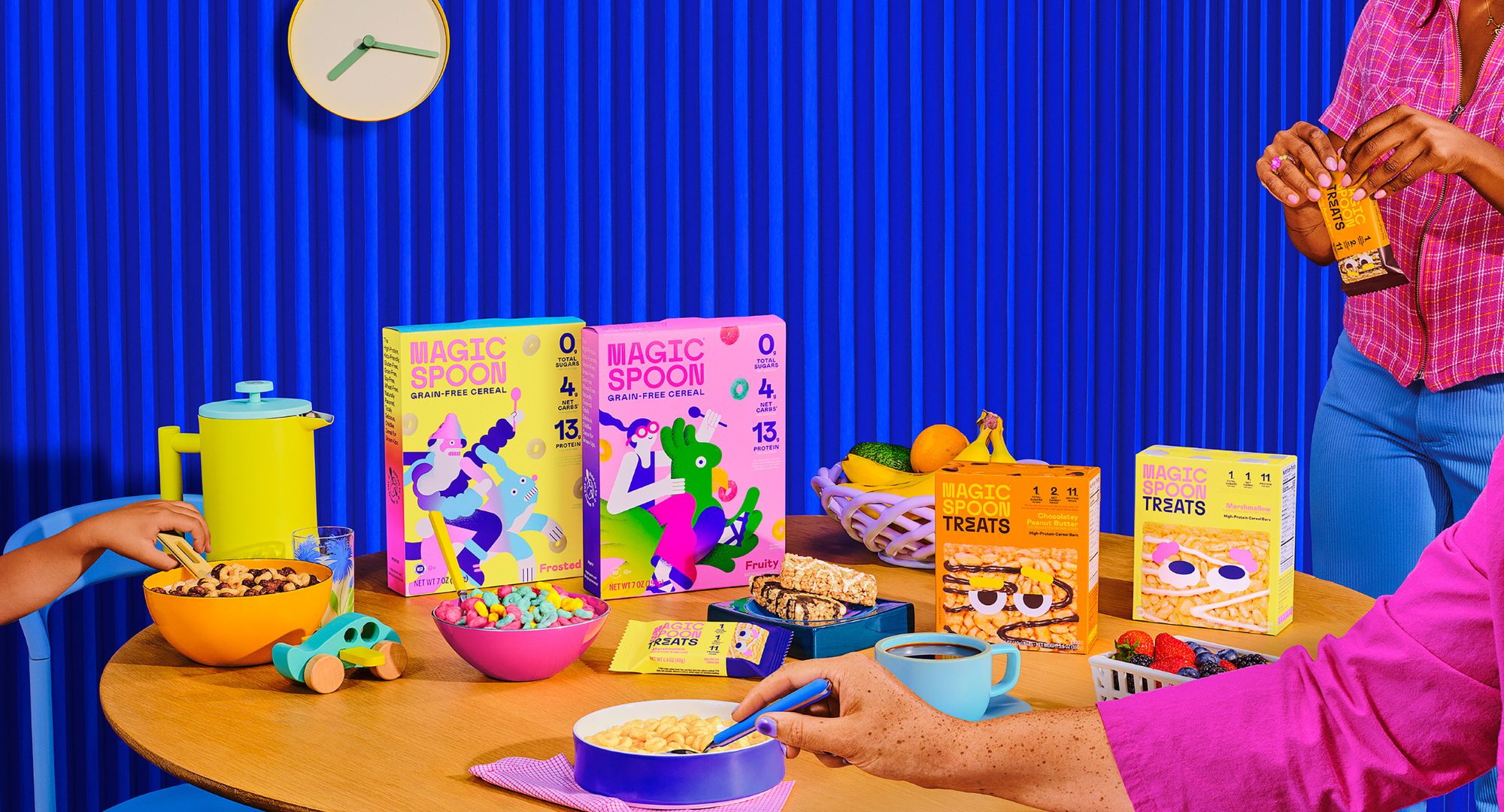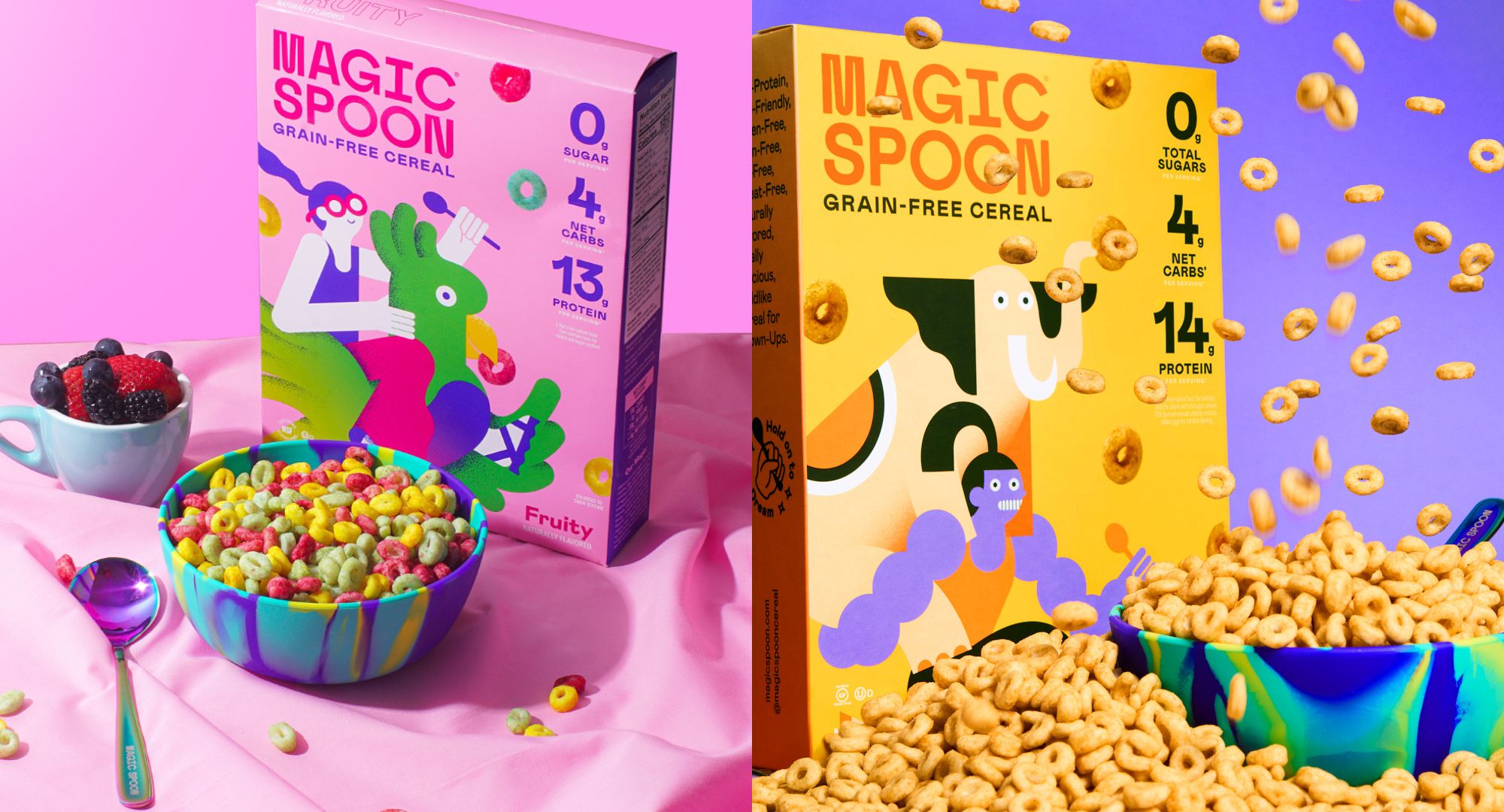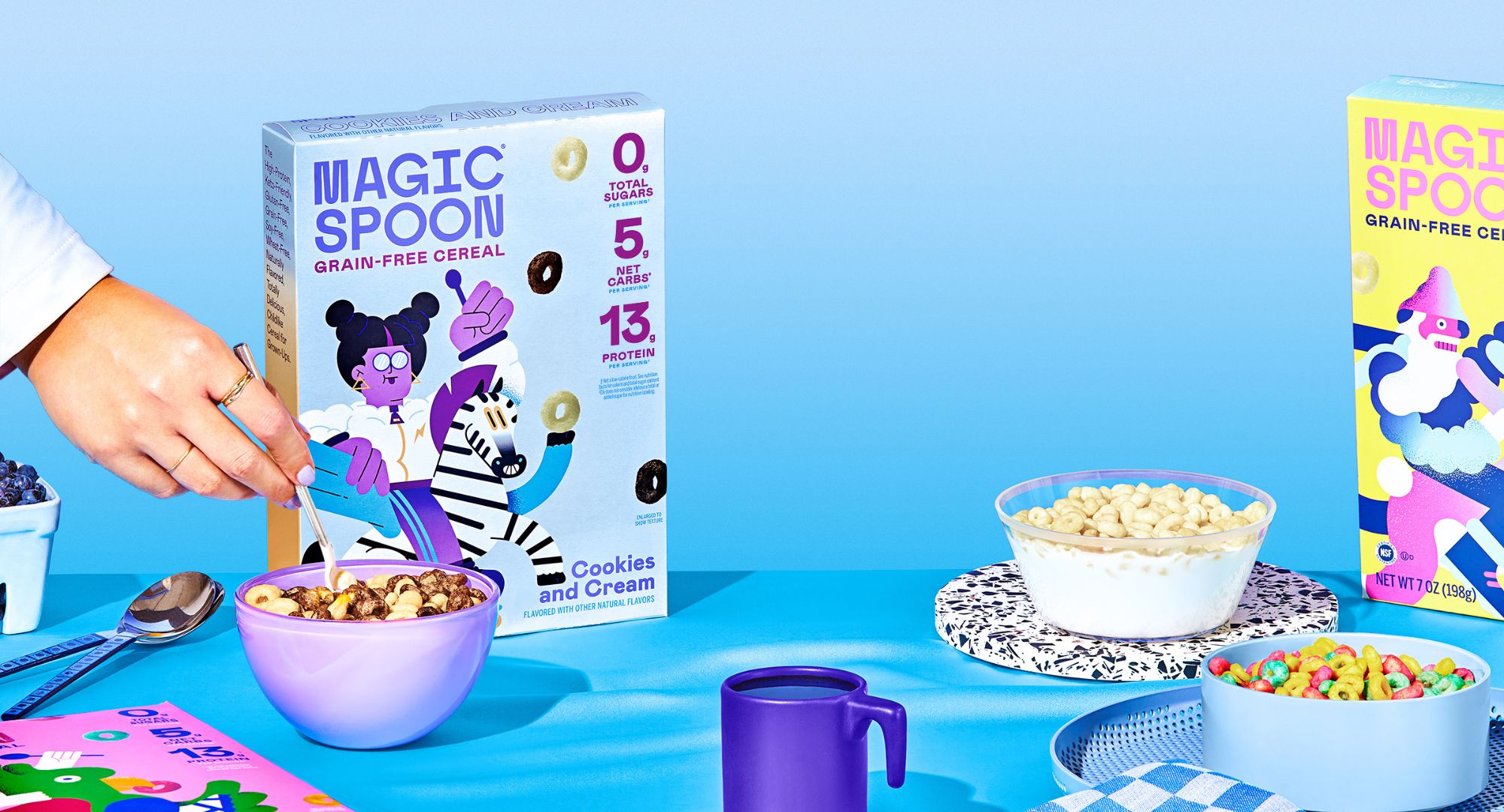
When you think of cereal, what comes to mind? Lazy Sunday mornings watching cartoons in your pajamas? Or maybe the sweet, sweet taste of Froot Loops or Lucky Charms? Either way (regardless of your favorite brand), cereal evokes childhood images for many of us.
Now, there’s Magic Spoon, a cereal that brings all the nostalgia (without the sugar) into a protein-packed cereal for adults. You’ve probably seen it on your Instagram feed, with its bright and colorful packaging, familiar flavors, and a promise of deliciousness that won’t derail your diet or fitness goals.
And it’s not just empty marketing hype. Magic Spoon cereal is made with a high protein content, making it a game-changer in the cereal aisle for adults who miss the nostalgic taste of cereal but want a healthier option.

What is Magic Spoon cereal?
Magic Spoon cereal is the grown-up version of your childhood favorite cereal. It’s marketed as a high-protein, zero-sugar, keto cereal that’s grain-free, gluten-free, and made with all-natural flavors.
You can choose from flavors like Fruity, Frosted, Cocoa, Peanut Butter, Blueberry Muffin, and Cinnamon Roll, all of which have 4-5g net carbs and 12-14g of complete protein per serving.
Magic Spoon cereal is a bit pricier than your typical grocery store cereal, but it’s worth it if you’re looking for a low-carb cereal that doesn’t taste like cardboard. For one case (six cereal boxes), it’ll cost you around $54 on the Magic Spoon website, but you can save 25% by signing up for a monthly subscription. That means you’ll pay about $1.80 per serving.
But is it healthy?
Protein doesn’t always equal healthy. While Magic Spoon is loaded with protein and lacks added sugars, it’s missing a few key elements that make a cereal truly healthy.
“Magic Spoon might boast a protein punch at 13g, but it’s missing key ingredients to power your morning and support your overall health,” says Steph Magill, MS, RD, CD, FAND, and owner of Soccer Mom Nutrition. “No carbs for brain and body fuel, and no fiber or essential vitamins and minerals from grains. Plus, it packs a higher fat content (7-10g per serving) and offers only 140-150 calories, leaving you hungry and running on empty not long after eating it.”
Even so, if you have dietary restrictions or are restricting yourself to low-carb foods, Magic Spoon might be a better alternative than traditional cereals.

What does it taste like?
High-protein foods usually taste less than ideal, but Magic Spoon cereal manages to achieve a balance between nutrition and flavor. According to one Magic Spoon cereal review published by SI, the Fruity flavor has a “great crunch, and a delicious flavor —sweet, but not too sweet,” while the Peanut Butter flavor was “just enough” in terms of sweetness and had a rich peanut butter taste.
In a separate review published in The New York Times, Magic Spoon cereal was described as “not far off from a piece of Cap’n Crunch that’s just a day away from going stale.” Whether that’s a good thing or not is subjective, but it does suggest that Magic Spoon cereal captures some of the essence of classic cereals (without the trash ingredients).



